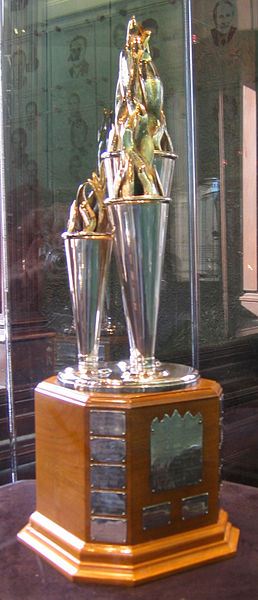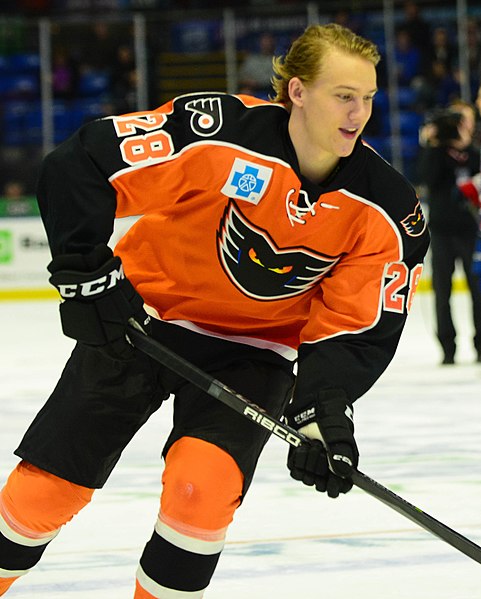Bill Masterton Memorial Trophy
The Bill Masterton Memorial Trophy is awarded annually to the National Hockey League player who best exemplifies the qualities of perseverance, sportsmanship, and dedication to ice hockey. It is named after Bill Masterton, the only player in NHL history to die as a direct result of injuries suffered during a game. The winner is selected by a poll of the Professional Hockey Writers' Association after each team nominates one player in competition. It is often awarded to a player who has come back from career– or even life-threatening illness or injury.
Bill Masterton Memorial Trophy
Oskar Lindblom, the winner for the 2020–21 season.
Bobby Ryan, the winner for the 2019–20 season.
Robin Lehner, the winner for the 2018–19 season.
William Masterton was a Canadian American professional ice hockey centre who played in the National Hockey League (NHL) for the Minnesota North Stars in 1967–68. He is the only player in NHL history to die as a direct result of injuries suffered during a game, the result of massive head injuries suffered following a hit during a January 13, 1968 contest against the Oakland Seals.
The Bill Masterton Memorial Trophy was created in 1968




